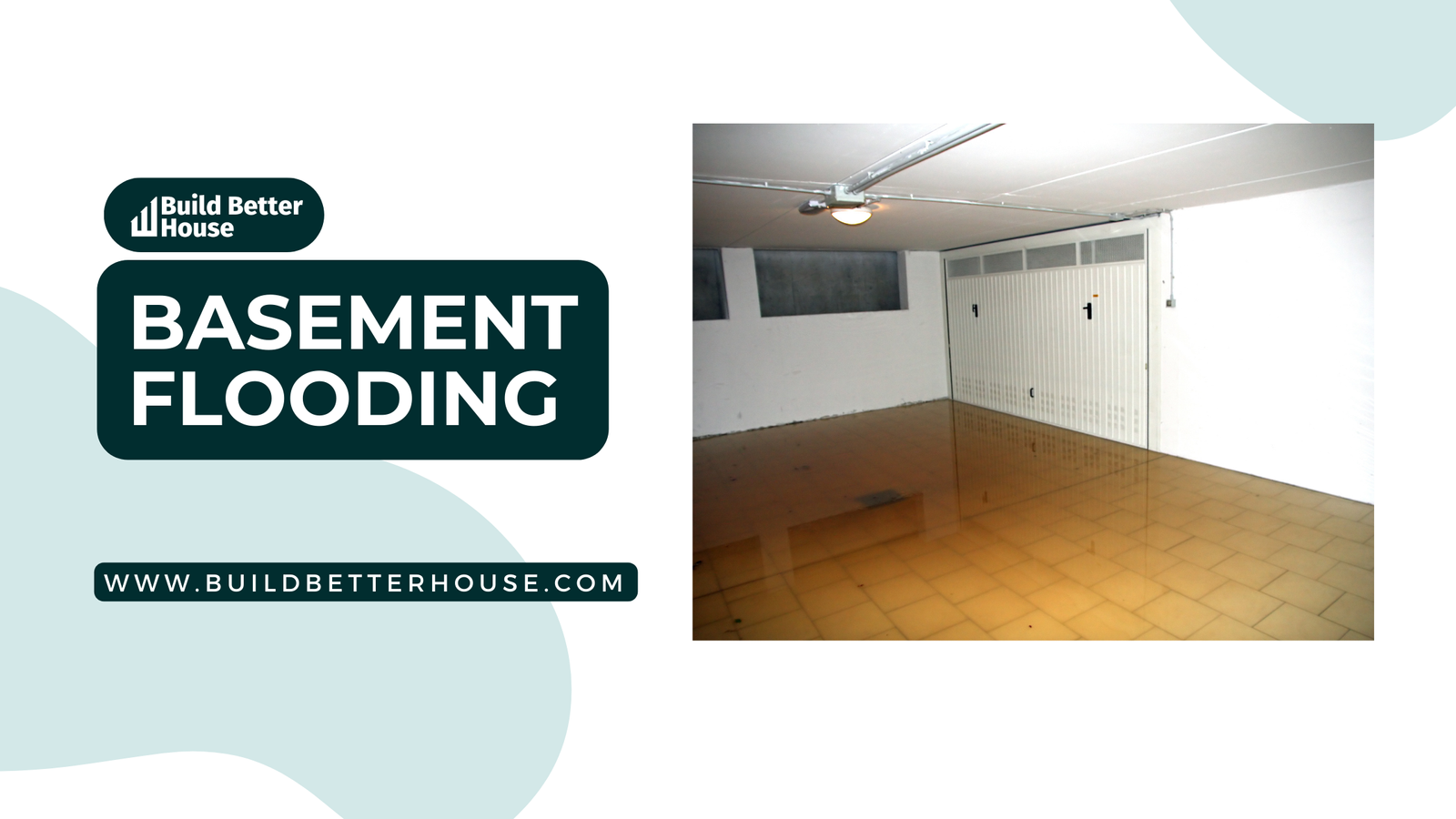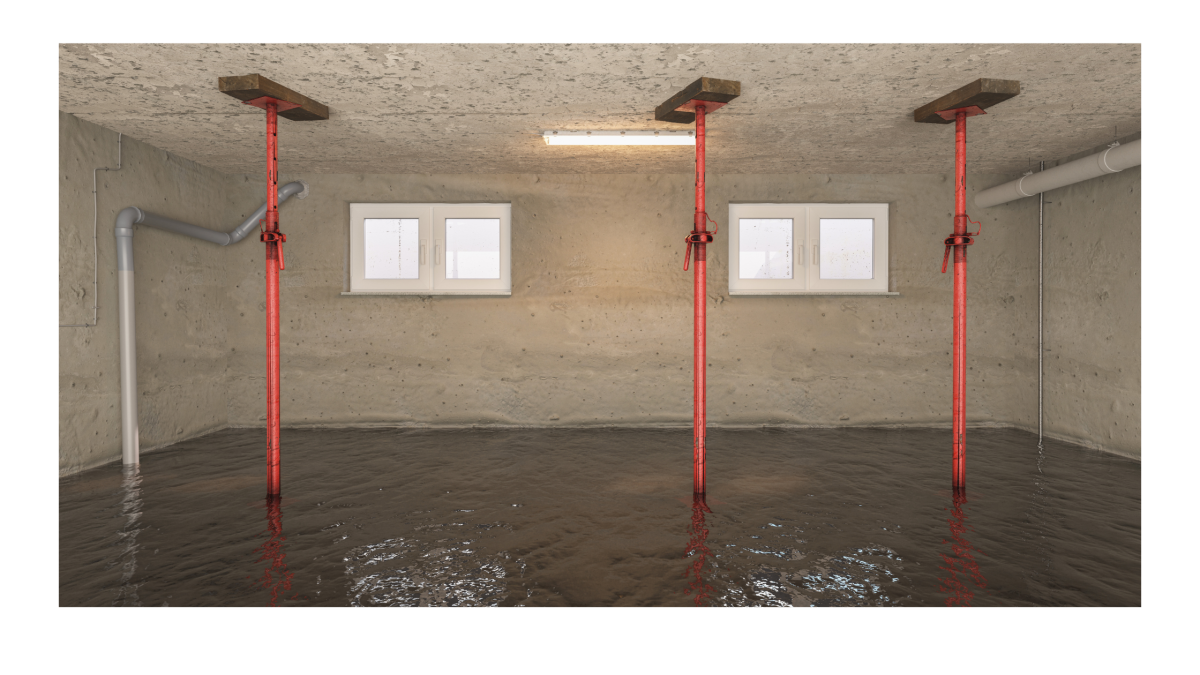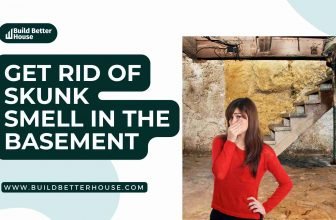Basement Flooding: Prevention, Causes, and Solutions

Basement flooding is an issue that many homeowners face, especially during periods of heavy rainfall or when local waterways overflow. Water can easily seep into your basement through exterior walls, windows, or floor drains, leading to extensive damage to your home and personal belongings. In addition to the immediate destruction, flooding can also cause long-lasting problems such as mold growth and structural damage, making it crucial to address the issue as soon as possible.
To prevent basement flooding, it is important to understand the primary causes as well as the steps you can take to mitigate them. Some common factors contributing to basement flooding include insufficient gutters, improperly installed or maintained downspouts, poor yard grading, and inadequate drainage systems. By addressing these issues, you can significantly reduce the likelihood of experiencing basement flooding in the future.

Key Takeaways
- Understand the primary causes and mitigation techniques for basement flooding
- Implement preventive measures to reduce the likelihood of basement flooding
- Recognize the importance of timely cleanup and restoration after a flooding event
Causes of Basement Flooding
Weather-Related Causes
Heavy rain and flash floods can cause significant problems for your basement. When rainwater accumulates, the ground around your home can become saturated, leading to increased pressure on your basement walls and foundation. This pressure can cause cracks, allowing water to seep into your basement. To protect your basement from weather-related flooding, ensure that your gutters and drains are clear, and check that they are directing water away from your home. Additionally, ensure the slope of your property guides rainwater away from your home’s foundation.
Structural Causes
Basement windows and foundational issues can contribute to basement flooding. Poorly sealed or damaged basement windows can act as an entry point for rain or groundwater to enter your basement. To address this issue, inspect basement windows for signs of leakage, replace damaged windows, and ensure they are well-sealed. Foundation cracks can also cause flooding, as water can easily seep through these weaknesses. It is crucial to repair these cracks and ensure your foundation is properly waterproofed to prevent water from entering your basement.
Plumbing Issues
Plumbing leaks, burst pipes, and issues with your home’s drainage system can all lead to a flooded basement. To prevent basement flooding due to plumbing issues, regularly inspect your pipes for signs of corrosion or damage. Also, check your sump pump to ensure it is functioning correctly, as a malfunctioning sump pump can cause basement flooding. Additionally, be mindful of your home’s drainage system, and make sure downspouts are positioned away from the basement walls, guiding rainwater away from your home. Proper maintenance of your plumbing system can significantly reduce the risk of basement flooding.
Preventing Basement Flooding
As a homeowner, taking preventive measures can help you avoid basement flooding and the costly repairs that come with it. Here are some steps you can follow to protect your home from flooding.
First, ensure your gutters and downspouts are clean and clear of debris. Regularly inspect and maintain them, so that rainwater from your roof flows easily away from your home. Make sure that any nearby drainage ditches or storm drains function properly. Moreover, extending gutter downspouts can help direct water further away from your home.
Next, pay attention to the slope of your yard. Grading your yard so that it slopes away from your house is another effective way to prevent basement flooding. This prevents water from accumulating near the foundation of your home, reducing the chances of water seeping into your basement.
It’s also essential to maintain the landscaping near your house. Planting vegetation can help absorb surface water, and using ground cover plants can limit soil erosion, reducing the risk of basement flooding.
A crucial step in protecting your basement from water damage is installing a sump pump. Sump pumps remove water that has accumulated in a sump basin, preventing it from entering your basement. Be sure to maintain your sump pump by checking its functionality regularly and ensuring the battery backup works in case of power outages.
Adding a quality dehumidifier to your basement can help control humidity levels, reducing the chances of mold and mildew growth. It also makes your basement less appealing to moisture-seeking pests.
Seal any cracks in your foundation and walls to prevent water from leaking into your basement. If you’re unsure about how to do this, consider hiring a professional basement waterproofing company to assess and address your needs.
It’s wise to have a wet vac and a dryer on hand to promptly remove any water in case of minor flooding. Additionally, consult a plumber to check your home’s drainage systems, including floor and foundation drains, and ensure they function correctly.
Lastly, as a homeowner, it’s essential to have flood insurance that covers damage caused by basement flooding, giving you peace of mind and financial protection against this potentially devastating event.
By following these steps and staying vigilant, you can effectively prevent basement flooding and protect your valuable investment in your home.
Safety Measures Before Cleanup
Before starting the cleanup process for a flooded basement, it’s crucial to prioritize your safety. The presence of water combined with potential electrical and gas hazards can create a dangerous situation. Follow these guidelines to ensure all precautions are taken.
First, turn off the power to the affected area by switching off the breaker box or fuse box. Do not attempt to enter the basement if there is standing water and the power is still on. In this case, call a professional electrician to handle it safely.
Next, shut off the gas supply by closing the main gas valve. Like electricity, gas can pose a life-threatening risk if it leaks into the flooded area. If you are uncertain about how to shut off the gas, contact your gas company for assistance.
Exercise caution while navigating the flooded area. Slippery surfaces, debris, and contaminated water can create hazards within the basement. Wear protective gear, such as rubber boots and gloves, to avoid direct contact with the water. Additionally, be mindful of any sharp objects, chemicals, or potential hazards hidden under the water.
Inspect the area for any damaged electrical fixtures, such as outlets, switches, or appliances. Avoid touching these fixtures; instead, let a qualified electrician handle the repairs to prevent electrocution or electrical fires. Whenever possible, keep electrical devices unplugged and avoid using extension cords.
By following these safety measures, you can effectively minimize the risks associated with basement flooding and ensure a successful cleanup process. Remember, never hesitate to call in professionals like electricians or gas company representatives if you’re unsure about handling these tasks on your own. Your safety is the top priority.
Cleaning and Drying after Flooding
After a basement flooding incident, it’s essential to start cleaning and drying as soon as possible to prevent any potential health issues or further damage. Here are the steps you can follow to properly clean and dry your basement after a flooding incident.
First, remove the water from the basement. You can use a wet vac, pool pump or even mops and towels to extract the standing water. Make sure to properly dispose of the water according to your local regulations. Additionally, it’s important to keep safety in mind while working around electrical items, especially if they have been affected by water damage.
Next, take out any damaged items. Remove soaked carpeting, furniture, and other belongings. Carefully assess the extent of damage to each item and decide whether it’s cost-effective to repair them or better to replace them. Keep in mind that flood insurance may cover some of these costs.
Clean all surfaces in the flooded area. Use sponges, scrub brushes, and a cleaning solution designed for water damage to ensure that all harmful bacteria, mold, and mildew are removed. Pay special attention to corners, crevices, and other hard-to-reach areas where bacteria and mold might hide.
Once the cleaning is complete, start the drying process. Use fans and dehumidifiers to thoroughly dry out the space. Place these devices strategically throughout the basement to ensure optimal air circulation and humidity reduction. You may also use a portable heater to help speed up the drying process, but ensure that your space is well-ventilated to avoid any risk of carbon monoxide poisoning.
Crucial during this process is to keep an eye out for mold and mildew growth. Mold and mildew can lead to health issues and cause further damage to your property. Check for signs of these and take appropriate action if you spot any growth. You might need the help of a professional cleaning company to address severe cases of mold and mildew effectively.
Lastly, don’t hesitate to seek professional help if you feel overwhelmed or unsure about handling the cleanup process on your own. Basement flooding repair companies have the expertise and equipment to help you deal with water removal, cleanup, and drying more efficiently. Additionally, they can properly assess the extent of water damage to your property and ensure the safe handling of electrical items and wiring.
In summary, the key steps in cleaning and drying after basement flooding include removing standing water, disposing of damaged items, cleaning surfaces, ensuring proper ventilation, and monitoring for mold and mildew growth. Following these steps can significantly reduce the risk of health issues and further damage to your property.
Repairing and Restoring Damaged Items
After experiencing a basement flood, it’s important to assess the damage and start repairing and restoring any water-damaged items. When dealing with a flooded basement, act quickly to prevent mold and mildew growth and minimize health issues.
First, assess the damage and determine which items can be salvaged. Furniture made of wood or metal may have a better chance of being saved, especially if only minimally exposed to water. Remove any wet items, like carpeting and furnishings, from the basement to help speed up the drying process.
When drying water-damaged items, use fans and dehumidifiers to encourage air circulation and reduce moisture. Consider using a wet/dry vacuum or a sump pump to remove standing water from your basement as well. Open windows and doors to allow fresh air to enter and circulate, which will help with drying and prevent lingering odors.
It’s important to disinfect your basement to prevent the growth of mold and mildew. For nonporous surfaces, you can use a solution of one cup of bleach to one gallon of water. Ensure proper ventilation when using bleach or other disinfectants to avoid inhaling fumes.
Some items, like electronics and appliances, may require professional help for proper restoration. Reach out to a water damage restoration service with experience in flooded basement cleanup. These professionals can help with drying, sanitizing, and repairing water-damaged items.
During the restoration process, check your basement floor drain to make sure it’s functioning correctly. A clogged or poorly functioning floor drain can contribute to further flooding problems. Maintaining your floor drain and sump pump will help prevent future basement floods.
Lastly, remember that safety should always be a priority when dealing with basement flooding repair. Wear personal protective equipment like gloves, goggles, and waterproof boots, and avoid contact with electrical outlets and appliances until they have been inspected by a professional. Refer to FEMA guidelines for additional information on safe flood cleanup practices.
Dealing with Insurance and Financial Assistance
When dealing with basement flooding, it’s essential to know your insurance coverage and options for financial assistance. As a homeowner, understanding the difference between home insurance and flood insurance is crucial.
Home insurance generally covers water damage caused by sudden and accidental events like a burst pipe, but it may not cover damage caused by groundwater seepage or flooding. Flood insurance, on the other hand, covers damages from external sources, such as heavy rains, overflowing rivers, and other natural disasters.
In case your basement floods, take immediate action. Remove standing water and try to salvage any water-damaged items. Document the damage by taking photos and making a list of all affected belongings, as this will be required by your insurance company when filing a claim.
Contact your insurance agent as soon as possible to discuss your coverage and start the claims process. Your agent can help you understand the extent of your coverage and guide you through the necessary steps. Keep in mind that some policies may have a deadline for reporting water damage, so prompt communication is critical.
While dealing with insurance matters, remember that your neighbors may also be affected by the flood. It’s essential to maintain open communication with them, as pooled resources can lead to quicker and more efficient recovery efforts.
In case your insurance coverage is not sufficient, reach out to FEMA for potential financial assistance. They offer various programs for individuals and communities affected by natural disasters, including grants and low-interest loans. Registering for FEMA assistance as soon as you can is essential to getting the help you need.
Another proactive measure is to install an alarm system that alerts you when water levels in your basement rise. This can help you take action before the situation gets worse and potentially mitigate damages.
By understanding the intricacies of insurance coverage, knowing when to seek financial assistance, and implementing preventative measures, you can effectively navigate and recover from a basement flooding incident.
Frequently Asked Questions
How can I prevent my basement from flooding?
To prevent basement flooding, you should regularly inspect and maintain your home’s gutters and downspouts. Install a sump pump and backup system to remove excess water. Additionally, ensure proper landscaping slope to direct water away from your foundation and seal any foundation cracks or gaps. Waterproofing your basement walls may also help to prevent flooding.
What steps should I take after my basement has flooded?
After your basement has flooded, ensure your basement is safe to enter by turning off power, including electricity and gas. Next, remove standing water using a wet vacuum or a sump pump. After removing the water, assess the damage and begin the drying process, including using fans and dehumidifiers. Identify the cause of the flooding and fix any problems to prevent future flooding. Consult with professionals, if needed.
What factors contribute to basement flooding?
Basement flooding can result from several factors, including heavy rainfall or snowmelt, poor drainage systems, blocked or overburdened gutters, foundation cracks, sump pump failure, sewer backups, or damaged water supply lines. Identifying and addressing these issues can help prevent basement flooding.
How can I dry my basement effectively after a flood?
To dry your basement effectively after a flood, first remove all standing water using a pump or wet vacuum. Then, use fans and dehumidifiers to help speed up the drying process. Open windows and doors to improve air circulation and remove damp, musty odors. Remove water-damaged items and building materials, and disinfect any remaining surfaces to prevent mold growth.
Is it necessary to hire a professional for flooded basement cleanup?
While it is possible to clean up a flooded basement on your own, hiring a professional can ensure a thorough and efficient job. Professionals have specialized equipment and expertise to effectively remove water, dry the area, and address mold or mildew problems. If the flooding is severe or the source is unknown, it’s recommended to consult with a professional.
Are there any health risks associated with a flooded basement?
A flooded basement can pose several health risks, including mold and mildew growth, which can cause respiratory problems and allergic reactions. Contaminated floodwater can also introduce hazardous bacteria or chemicals. Ensure proper cleanup and drying to minimize the potential health risks. Seek professional help if you have any concerns or uncertainties.






